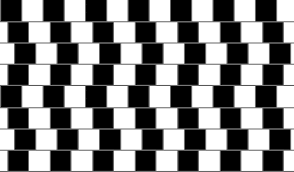Well, they're on Macdonell St, so that's a plus! West end definitely needs bike infrastructure..
However, again with the sharrows?.. Is this now the standard go-to?
First of all, bike lanes with clear demarcation, legislative backing and police enforcement work. The focus, I feel, should be to expand, enhance, and champion this avenue. Stick with those and stop confusing the cycling situation with sharrows which I feel are a problem in that they negatively meddle/influence the mind of a (especially suburban) driver. When a driver is allowed to legally drive and legally park over an image of a cyclist I feel that's generally not a good precedent to set. It will, I feel pretty obviously, creep into and confuse the official bike lane rules of no motor vehicle entry and stopping. Furthermore, sharrows are really just a city cop-out. What the hell are sharrows anyway? What purpose do they serve if there is no legislative power behind them? To make drivers aware that they are supposed to share the road with cyclists? Really?? So yeah, ok, we're supposed to have sharrows on all city roads then?..
And now this; two-way sharrows? I can't speak for what the "Urban Repair Squad folks" have in mind with this, but I think it additionally compounds the above issues for all involved. First of all, on the technical side, I'm not even sure what that symbol means. Personally, it looks like the cyclist is << vibrating >>, and no directional indicator is implied. Why not just write "TWO WAY"? Or maybe something more like these symbols?:
(by the by, looking up "two-way" images isn't as great as you'd think)
Now, to be clear, of course I would love the double two-way official bike lane, but realistically that is not an option on every street. Moreover, I think people/cycling advocates should start picking their battles and not expect something even remotely like this on every street, especially very major and/or very minor ones... but anyway, I don't want to wade into those waters at the moment...
If there is going to be a push for legal two-way traffic for cyclists on one-way vehicular streets (which I feel there should be in some cases), this is, in my opinion, not the way to go about achieving that. This is an arrogant, self-defeating, passive aggressive, and an almost to the point of childish prank. I'm just not sure what positive effect this has for cyclists and their safety in general. The idea is to try to get new people to feel safe on bikes and not to have them feel intimidated like they're joining some cult while doing that ("Ha! You're one of us now!.. another convert!" type thing that I've heard said way too many times... ), while also allowing them to feel safe and secure within the infrastructural support system provided.
We don't need more cyclists -- we need more people to feel comfortable riding bikes in the city. A guerrilla style attack is not going to achieve that goal. Nor will official city sharrows for that matter. (Further on that note, have the survey results of the College Street come in?)
I feel the cycling community has had the opportunity to attract (and has attracted) a lot of attention in the press this summer with the opportunity to reach new ears and break new ground, and I feel that because of rogue campaigns and public image problems they seem to have damaged their chances to capitalize on that. Again, that may neither be here nor there...
To conclude this diatribe, I'm still not sure what the problem is with official bike lanes, and why adopting and accepting sharrows is everyone's m.o. these days. There should be no compromise here, especially when there is a good reason for there to be one.
13 years ago










